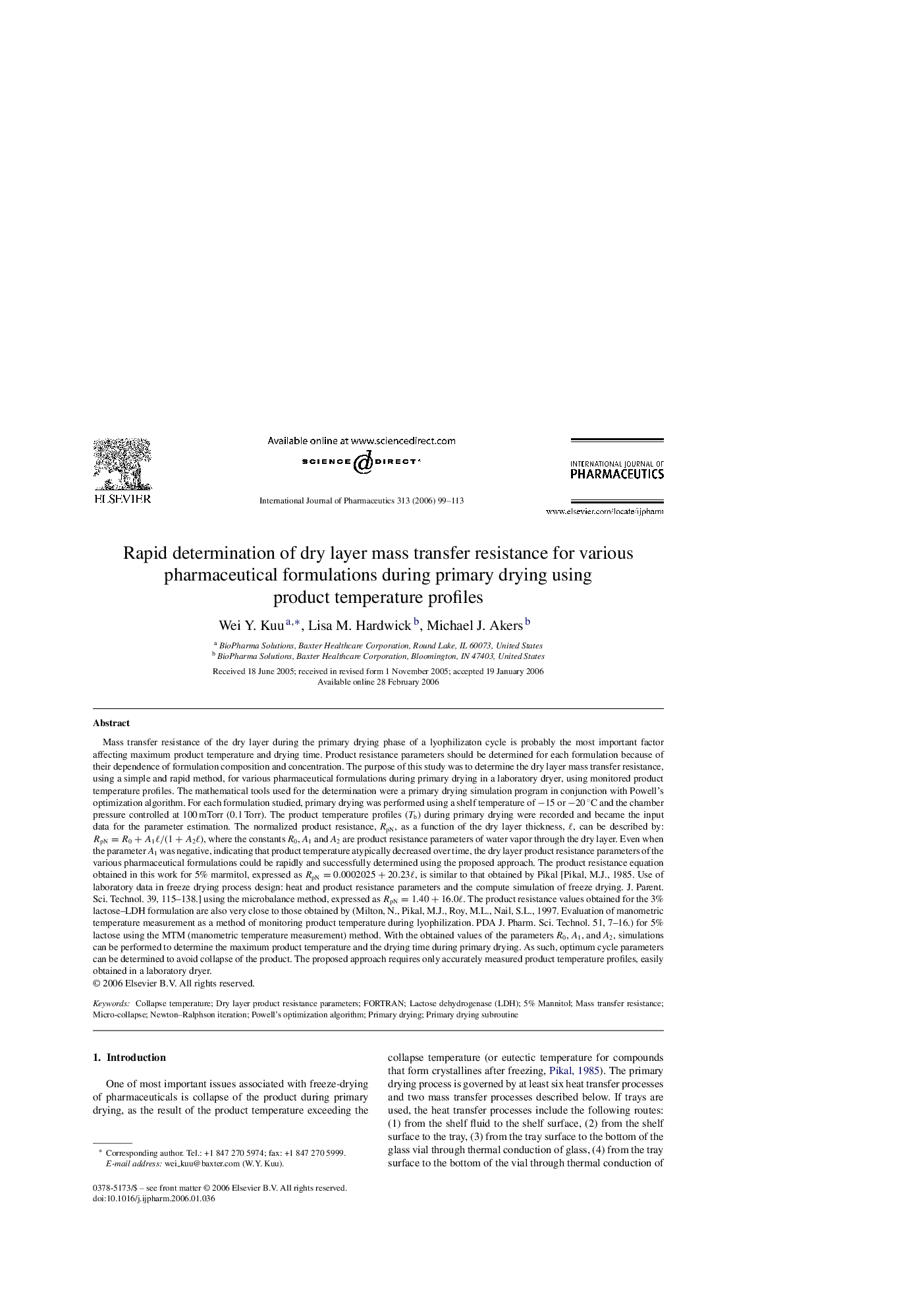| کد مقاله | کد نشریه | سال انتشار | مقاله انگلیسی | نسخه تمام متن |
|---|---|---|---|---|
| 2506871 | 1557539 | 2006 | 15 صفحه PDF | دانلود رایگان |

Mass transfer resistance of the dry layer during the primary drying phase of a lyophilizaton cycle is probably the most important factor affecting maximum product temperature and drying time. Product resistance parameters should be determined for each formulation because of their dependence of formulation composition and concentration. The purpose of this study was to determine the dry layer mass transfer resistance, using a simple and rapid method, for various pharmaceutical formulations during primary drying in a laboratory dryer, using monitored product temperature profiles. The mathematical tools used for the determination were a primary drying simulation program in conjunction with Powell's optimization algorithm. For each formulation studied, primary drying was performed using a shelf temperature of −15 or −20 °C and the chamber pressure controlled at 100 mTorr (0.1 Torr). The product temperature profiles (Tb) during primary drying were recorded and became the input data for the parameter estimation. The normalized product resistance, RpN, as a function of the dry layer thickness, ℓℓ, can be described by: RpN=R0+A1ℓ/(1+A2ℓ)RpN=R0+A1ℓ/(1+A2ℓ), where the constants R0, A1 and A2 are product resistance parameters of water vapor through the dry layer. Even when the parameter A1 was negative, indicating that product temperature atypically decreased over time, the dry layer product resistance parameters of the various pharmaceutical formulations could be rapidly and successfully determined using the proposed approach. The product resistance equation obtained in this work for 5% marmitol, expressed as RpN=0.0002025+20.23ℓRpN=0.0002025+20.23ℓ, is similar to that obtained by Pikal [Pikal, M.J., 1985. Use of laboratory data in freeze drying process design: heat and product resistance parameters and the compute simulation of freeze drying. J. Parent. Sci. Technol. 39, 115–138.] using the microbalance method, expressed as RpN=1.40+16.0ℓRpN=1.40+16.0ℓ. The product resistance values obtained for the 3% lactose–LDH formulation are also very close to those obtained by (Milton, N., Pikal, M.J., Roy, M.L., Nail, S.L., 1997. Evaluation of manometric temperature measurement as a method of monitoring product temperature during lyophilization. PDA J. Pharm. Sci. Technol. 51, 7–16.) for 5% lactose using the MTM (manometric temperature measurement) method. With the obtained values of the parameters R0, A1, and A2, simulations can be performed to determine the maximum product temperature and the drying time during primary drying. As such, optimum cycle parameters can be determined to avoid collapse of the product. The proposed approach requires only accurately measured product temperature profiles, easily obtained in a laboratory dryer.
Journal: International Journal of Pharmaceutics - Volume 313, Issues 1–2, 26 April 2006, Pages 99–113